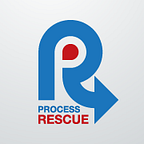Do you really need to restructure again?
Every few years a company gets to the point where it feels the need to undergo a transformation of some sort, often involving an organisation restructure. Some I have worked with have done this as often as every two years or so.
Not only is this a very expensive exercise, but it often results in only short-term gains based on the enthusiasm of staff stepping up to a new challenge. Most often, this is not sustained, and it’s not long before executives long for the days of post-change freshness, and so the cycle repeats!
The brightest stars are often the first to leave, those you had hoped would drive the organisation out of the current malaise. This is a natural consequence as they have options. Meanwhile, those that are not the best-fit stay and induct new staff into continued bad habits.
The good news is there is a better way.
Out the other side of a transformation programme, some things probably won’t change. This includes the services offered to customers, customer expectations of that service, the legal and regulatory framework the business operates in and the need for people to be involved in delivering those services at some point (regardless of how they are engaged to do so). So rest assured, you don’t need to junk your whole business model.
Unsurprisingly, being a process management person, I’m going to say that you need your processes documented, managed and continuously improved if you’re ever going to get off the treadmill of constant restructuring.
A process management framework brings many real-world benefits, but one of the key ones is the links with capabilities. If you take a standard swimlane-style process map and analyse what skills are needed to complete each activity, you quickly begin to see what capabilities (skills, knowledge, supporting tools etc.) are required to get optimal results. When combined with the frequency of execution of these processes, you’re getting the building blocks for job descriptions.
Then you can begin to assess your current capabilities against future needs using the superpower of solid facts. Decisions can then be made on the best course of action from there, such as recruiting/developing staff, insourcing, outsourcing or automating.
Given the capability gaps, you might also distinguish between processes that need some incremental improvement or those that require serious rethinking. I call this the evolution/revolution decision point.
An underestimation of the maturity of the process management practice can jeopardise such an approach. I will tell you a secret here, your staff won’t tell you, and their direct managers probably don’t know… You need to assume the worst as processes are more often documented to appease managers or tick a box on a plan than because they are integral to someone's day-to-day activities! That needs a culture change.
I can tell you what a mature process management practice would look like and how to go about process culture change, but that’s a topic for another day.
In summary (and to link back to the accompanying image),
